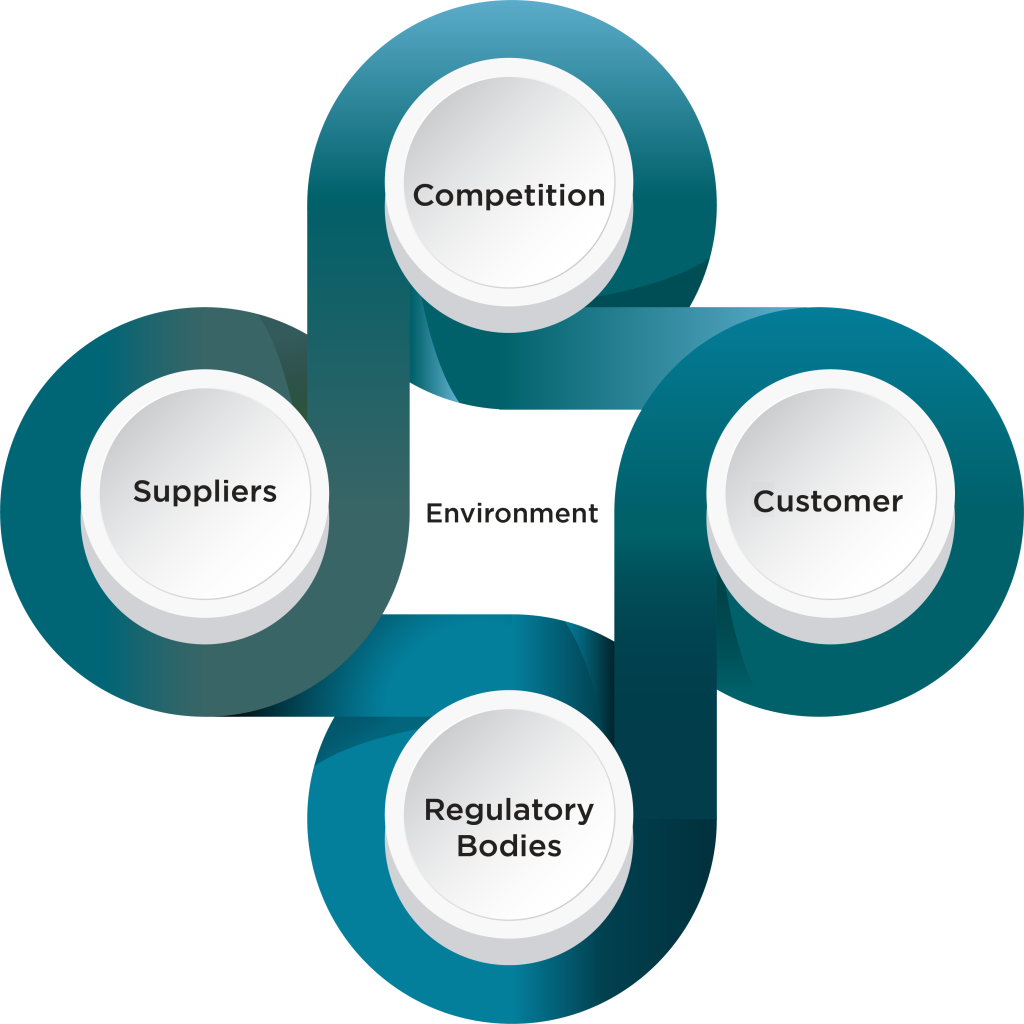2.1 Modern Environment of Business

To better appreciate competitiveness, let’s take a look at the dynamic environment of business today and the key players that can impact business decision-making. Consider a business unit like Dr. Oetker’s pizza factory in London, Ontario. That plant is embedded in multiple layers of the environment (local, provincial, national, and international), and its products are prepared there. Within these layers of environment, there are countless players that directly or indirectly can impact what happens inside this factory, as shown in Figure 2.1.1.

These players include ISO, financial institutions, environmental activists, food research institutions, farming, engineering, logistic and IT firms. In addition, four prominent players (suppliers, competitors, customers and regulatory bodies) are present. All these players can interact with each other and collectively influence the decisions made by this company and the activities that take place inside this factory.
For Dr. Oetker, customers are most important because they can determine the sales volume and, hence, the firm’s profit. The challenge is what Dr. Oetker should do to win more customers while the competition pursues the same objective. Both are competing for a bigger share of the market, for which they would need suppliers, and both must follow the regulatory standards as they are operating in the food industry. Therefore, their internal decisions and activities (operations) are influenced by external forces, namely, suppliers, customers, and competition. All business firms seek and plan for more profit by expanding their market share. However, the success of such a plan (Strategy) depends on their awareness of the influences in the business environment and their competitiveness.

